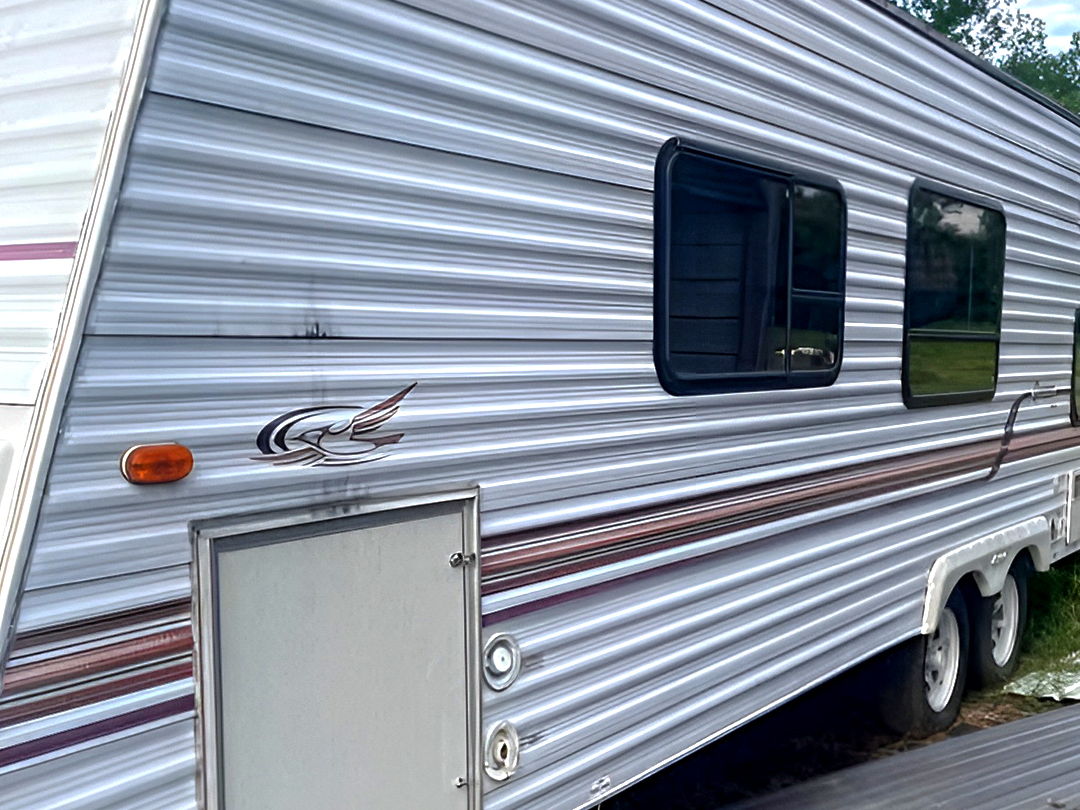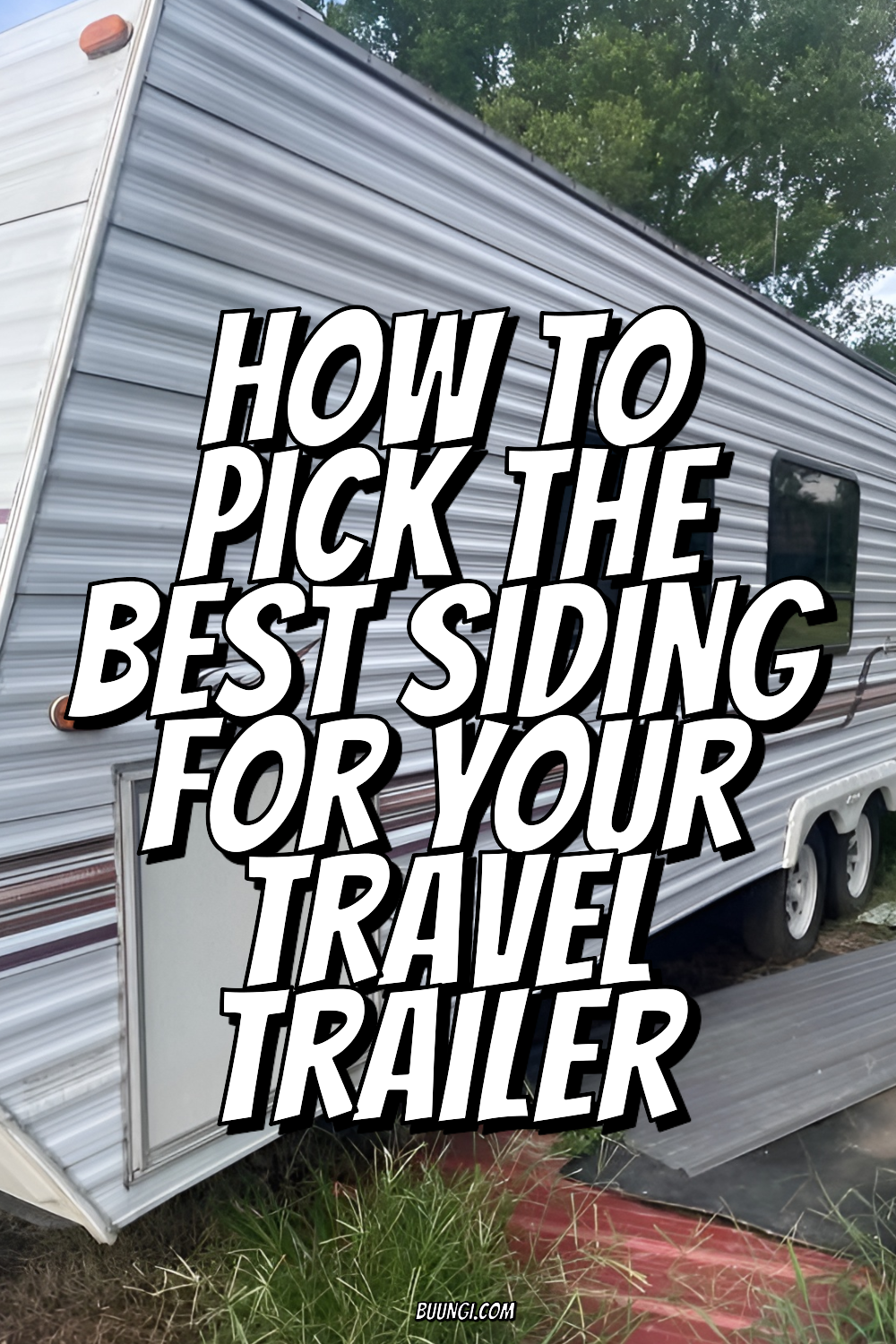Ever catch yourself daydreaming about hitting the open road in your travel trailer—then snap back to reality at the sight of peeling panels or faded, dented sides? You’re not alone. The right siding can make your camper look sharp, stay safe from the weather, and even boost its value. But with so many choices out there, picking the best siding feels a bit like standing in the paint aisle—overwhelming, right?
Don’t worry! We’re about to break down each type of travel trailer siding, explain the pros and cons, and help you find the perfect match for your next adventure. Whether you’re renovating an old rig or buying brand new, you’ll soon know exactly what to look for—and what to avoid.
So, ready to give your travel trailer a makeover that lasts? Let’s dive in!
Why Siding Matters (A Lot More Than You Think!)
Siding isn’t just about curb appeal. It protects your camper from rain, sun, road debris, and winter chills. The right siding keeps you cozy inside and makes your trailer easier to care for outside. Plus, it’s the first thing people notice—so why not make it count?
Great siding can:
- Prevent water leaks and costly rot.
- Reflect heat, keeping your trailer cool.
- Make cleaning a breeze.
- Add years to your trailer’s life.
- Show off your personality (hello, colors and textures!).
The Main Types of Travel Trailer Siding
Let’s break down the main options you’ll see on the market. Each siding type has its own look, feel, and set of strengths. Here’s what you need to know before you buy—or start your next DIY project!
1. Aluminum Siding: The Retro Classic
What Is It?
Think of the vintage campers with shiny, horizontal ridges. That’s aluminum. Most are made of long, overlapping sheets, fastened to the frame in sections called “lap siding.”
Pros:
- Lightweight: Easier to tow and handle.
- Rust-resistant: Doesn’t corrode easily.
- Affordable: Usually less expensive than fiberglass.
- Easy repairs: You can swap out single panels if damaged.
- Cool factor: Has that classic “retro camper” charm.
Cons:
- Dents and dings: Hail, tree branches, and even a stray baseball can leave marks.
- Seam leaks: Water can sneak in if the seams aren’t sealed well.
- Wavy look: Can show ripples or imperfections over time.
- Noisy: Rain or hail on aluminum can sound like a drum.
Best For:
DIY renovators, vintage trailer lovers, and anyone who wants to keep weight low and repairs easy.
2. Fiberglass Siding: Smooth and Modern
What Is It?
Fiberglass panels are molded into large, flat sheets or curved “shells.” These panels are glued or bonded to an underlayer (usually wood or foam).
Pros:
- Sleek look: Smooth surface, easy to paint or clean.
- Resists dents: Stands up to hail and bumps.
- Low maintenance: Fewer seams means less chance for leaks.
- Lighter than wood: Keeps the trailer weight down.
- Color variety: Available in all sorts of shades.
Cons:
- Can crack: Sharp impacts or heavy stress can cause cracks.
- Delamination risk: If water gets behind the fiberglass, it can bubble or separate.
- More costly: Usually more expensive than aluminum.
- Trickier repairs: Cracks need special patching, not just panel swaps.
Best For:
Modern trailer owners who want a fresh, clean look with less upkeep and better weather resistance.
3. Corrugated Steel Siding: Tough and Industrial
What Is It?
Heavy-duty steel panels with a wavy, corrugated pattern—sometimes used on utility trailers or rugged, off-road campers.
Pros:
- Super strong: Resists big impacts, like tree branches or gravel.
- Long-lasting: Doesn’t wear out fast.
- Low flame risk: Fire-resistant compared to some materials.
- Industrial style: Gives your trailer a “rugged” look.
Cons:
- Heavy: Adds weight, so you’ll burn more gas.
- Prone to rust: Needs regular care in wet or coastal climates.
- Harder to cut/replace: DIY repairs take more tools and skill.
- Less insulation: Can make the trailer colder or hotter, depending on the weather.
Best For:
Adventurers, hunters, and anyone who wants a camper that can really take a beating.
4. Composite Siding: The New Kid on the Block
What Is It?
Made from layers of materials—often plastic and wood fiber—these panels mimic the look of real wood or stone but are much lighter.
Pros:
- Moisture resistant: Doesn’t rot or mold easily.
- Custom looks: Can be made to look like wood, stone, or even brick.
- Lightweight: Easier on your tow vehicle.
- Eco-friendly options: Some are made from recycled materials.
Cons:
- Still pretty new: Long-term durability can vary.
- Limited colors: Not as many finishes as fiberglass or aluminum.
- Costs more: Upfront price is higher for premium brands.
Best For:
Eco-conscious campers or anyone who wants a stylish look with lower maintenance.
5. Wood Siding: Warm, Rustic Charm
What Is It?
Genuine wood planks or panels—think cedar, pine, or even plywood—installed much like a tiny cabin.
Pros:
- Classic beauty: Nothing beats real wood for charm.
- Customizable: Easy to paint, stain, or carve.
- Insulation: Wood helps regulate temps better than metal.
Cons:
- High maintenance: Needs sealing, staining, or painting often.
- Heavy: Adds weight to your rig.
- Attracts bugs: Can be a snack for termites or ants if not treated.
- Can rot: Water is wood’s worst enemy.
Best For:
Cabin lovers, tiny house fans, and anyone willing to do a little extra care for a one-of-a-kind look.
Key Things to Consider Before You Decide
Not sure which siding is best for you? Use these questions to narrow it down:
1. What’s Your Climate?
- Wet or humid? Pick siding that won’t rot or rust, like fiberglass or composite.
- Hot and sunny? Lighter colors and heat-resistant materials reflect sunlight better.
- Cold winters? Look for siding with good insulation or plan to add foam boards inside.
2. How Will You Use Your Trailer?
- Weekend trips: Most siding will do the trick if you park under cover.
- Full-time living: Invest in siding that’s durable, easy to clean, and insulated.
- Off-road or rough camping: Go for steel or heavy-duty aluminum to handle bumps and branches.
3. What’s Your Budget?
- Tight budget: Aluminum is often cheapest and easy to repair.
- Mid-range: Fiberglass costs a bit more but needs less care.
- High-end: Composite or premium steel siding lasts longer and looks sharp.
4. Do You Like to DIY?
- Handy with tools? Aluminum and wood siding repairs can be done at home.
- Prefer pros? Fiberglass and composite often need a shop for major repairs.
How to Keep Your Siding Looking Great
No matter which siding you choose, a little care goes a long way. Here’s how to keep your trailer turning heads for years:
- Wash it often: Use a gentle soap and soft brush, especially after dusty or salty trips.
- Seal the seams: Check caulking and seals every season to stop leaks.
- Protect from the sun: Park in the shade or use a cover when not traveling.
- Touch up scratches: Small chips or cracks? Fix them fast before water gets in.
- Watch for pests: Check wood or composite for signs of bugs.
Frequently Asked Questions
Q: Can I change the siding on my old travel trailer?
A: Yes! Lots of owners swap out aluminum for fiberglass, or add new panels to freshen up an old rig. Just make sure the frame and insulation are in good shape before you start.
Q: Does siding affect my trailer’s resale value?
A: Absolutely. Good siding boosts value and curb appeal. Damaged, dented, or faded siding can lower the price—so keep it looking sharp.
Q: Can I paint my trailer siding?
A: You can paint most types (even aluminum and fiberglass), but use paint made for RVs or outdoor use. Follow the prep steps so it sticks.
Ready for a Fresh Look?
Picking the best siding isn’t just about looks—it’s about loving your travel trailer every time you head out. Now you know the basics, the pros and cons, and the care tips that’ll keep your camper shining on every adventure.
Don’t let siding choices hold you back. Whether you love the retro style of aluminum, the sleek modern touch of fiberglass, the toughness of steel, or the cozy feel of wood, there’s a perfect fit for you out there.
So go ahead—make your trailer the star of the campground. Happy travels, and here’s to siding that stands up to every mile!


